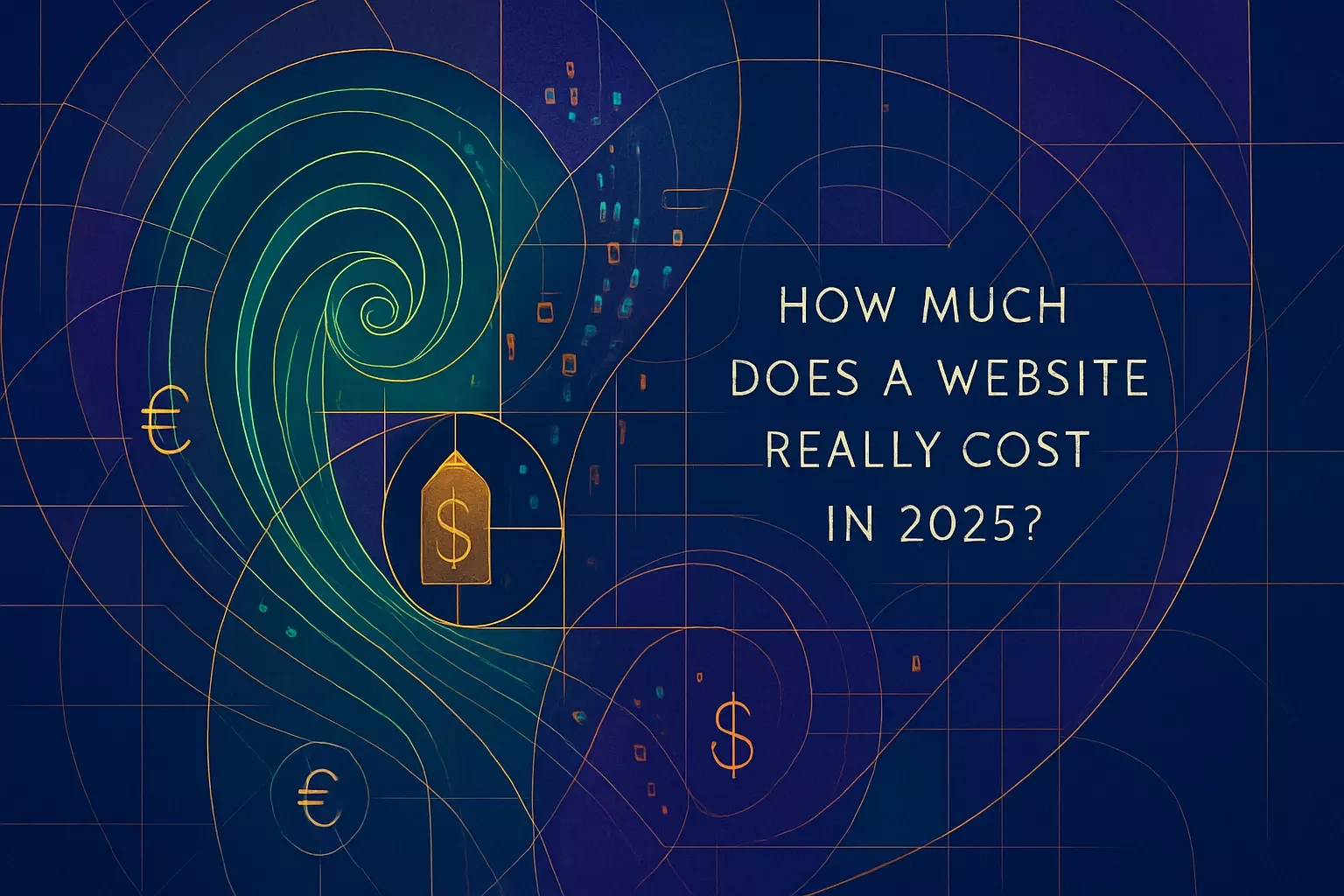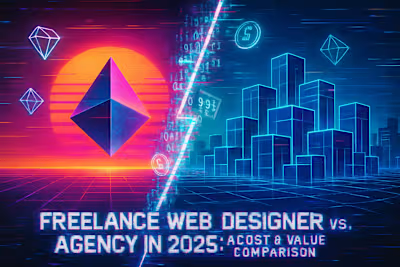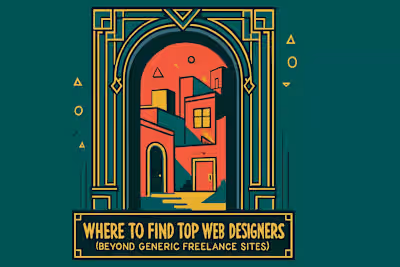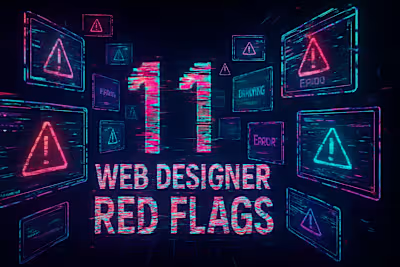How Much Does a Website Really Cost in 2025? (Full Pricing Guide)

How Much Does a Website Really Cost in 2025? (Full Pricing Guide)
Core Factors That Influence Website Cost
Scope & Complexity
Custom Design vs. Template
E-commerce Functionality
Content Creation
Website Cost Breakdown by Project Type (2025 Estimates)
Basic Informational Website (3-10 pages)
Small Business / Lead Generation Website (10-25 pages)
E-commerce Website (Small to Medium)
Large Custom or Enterprise Website
Don't Forget Ongoing Costs
Domain Name & Web Hosting
Website Maintenance Plans
SEO & Digital Marketing
Making Smart Website Investment Decisions
References
How Much Does a Website Really Cost in 2025? (Full Pricing Guide)
Building a website for your business feels like a big leap. You know you need one, but the pricing seems all over the place. Some quotes come in at $500, while others hit $50,000. What gives?
Here's the truth: website costs in 2025 vary wildly because every project is unique. Understanding the cost of a new website is a critical first step for any business. This guide breaks down exactly what you'll pay and why. We'll explore costs by project type and touch on how your choice between providers, such as considering freelancer vs. agency costs, can impact your budget. Before you can hire top web designers, you need a clear financial plan.
Think of this guide as your roadmap to website pricing. We'll cover everything from basic sites to complex e-commerce platforms. You'll learn what drives costs up (and down) and get real numbers for different project types. By the end, you'll know exactly what to budget for your specific needs.
Core Factors That Influence Website Cost
Several key variables determine the price of a website. It's not just about counting pages. The real cost drivers include complexity, customization level, and the resources needed to bring your vision to life.
Let's break down each factor so you can see how they impact your bottom line.
Scope & Complexity
The size and complexity of your website form the foundation of your budget. A simple 5-page site costs way less than a 50-page platform with interactive features.
Think about it this way. A basic site might include a homepage, about page, services, contact form, and maybe a blog. That's straightforward stuff. But what if you need user accounts? Or a booking system? Maybe you want a custom calculator or interactive map?
Each feature adds development time. A booking system alone can add 20-40 hours to a project. User accounts? That's another 15-30 hours. These aren't just random numbers – they represent real work hours that translate directly to costs.
Complexity also shows up in design details. Custom animations, parallax scrolling, and unique page layouts all require extra effort. A site with 10 simple pages might cost less than a 5-page site loaded with custom features.
Custom Design vs. Template
Your choice between custom design and templates makes a huge difference in price. Templates offer a budget-friendly starting point, while custom designs deliver unique branding.
Template-based websites typically cost between $1,000 and $5,000. You're working with pre-built layouts that get customized with your colors, fonts, and content. The designer tweaks the template to match your brand, but the heavy lifting is already done.
Custom designs start around $5,000 and can easily reach $20,000 or more. Every element gets built from scratch. Your designer creates unique layouts, custom graphics, and branded elements that nobody else has. You get complete control over the user experience.
The trade-off is clear. Templates save money but might look similar to other sites. Custom designs cost more but give you a one-of-a-kind web presence. Many businesses find a middle ground – using a template foundation with custom elements added on top.
E-commerce Functionality
Adding e-commerce transforms a simple website into a full business platform. The costs reflect this complexity jump.
Basic online stores with 10-50 products typically run $5,000 to $15,000. This includes product pages, shopping cart functionality, and payment processing. You'll get standard features like product categories, search functions, and basic inventory management.
But e-commerce costs scale quickly with complexity. Need product variations (size, color, style)? Add 20% to the budget. Want advanced filtering options? That's another chunk. Custom shipping calculators, subscription options, or wholesale pricing tiers all add development time.
Security becomes critical with e-commerce. SSL certificates, PCI compliance, and secure payment gateways aren't optional – they're essential. These security measures protect your customers and your business, but they also add to the initial investment.
Large e-commerce sites with hundreds of products and custom features often exceed $25,000. At this level, you're building a sophisticated selling machine with automation, advanced analytics, and seamless user experiences.
Content Creation
Here's a cost many people forget about: content. Your website needs words, images, and maybe videos. Who creates all that?
If you provide everything, great! You've just saved thousands. But most businesses need help with at least some content creation.
Professional copywriting runs $50-150 per page for web content. A 10-page site might need $500-1,500 in copywriting. Good copy does more than fill space – it converts visitors into customers. Writers who understand SEO and conversion optimization charge premium rates.
Photography and graphics add another layer. Stock photos work for some businesses, but many need custom photography. A half-day photo shoot runs $500-2,000. Custom graphics and illustrations start around $100 per image.
Video content pushes budgets even higher. A simple 60-second explainer video costs $1,000-5,000. Product demos, team introductions, or customer testimonials all require planning, shooting, and editing.
Smart businesses budget for content from the start. Nothing kills a beautiful website faster than weak copy or generic stock photos.
Website Cost Breakdown by Project Type (2025 Estimates)
Let's get specific with numbers. These estimates reflect typical 2025 pricing for different website types. Remember, your actual costs depend on the factors we just covered.
Basic Informational Website (3-10 pages)
Small businesses often start here. You need an online presence that looks professional and provides essential information.
Typical cost range: $1,000 to $3,000
This gets you a clean, mobile-friendly site with core pages. Think homepage, about us, services, and contact. You might include a simple blog or news section. The design uses a quality template with customization to match your brand.
At the lower end ($1,000-1,500), expect minimal customization. Your designer works with existing templates and makes basic adjustments. Content creation falls on you.
The higher end ($2,500-3,000) includes more design flexibility. You get custom graphics, better mobile optimization, and maybe some basic SEO setup. The designer might help with content editing or provide guidance on best practices.
These sites work great for local businesses, consultants, or anyone who needs a professional web presence without complex features.
Small Business / Lead Generation Website (10-25 pages)
Growing businesses need more sophisticated websites. You want to capture leads, showcase multiple services, and build authority in your market.
Typical cost range: $3,000 to $10,000
This level includes everything from basic sites plus lead generation tools. Think contact forms that integrate with your CRM, email newsletter signups, and downloadable resources. You get a proper content management system (CMS) so you can update content yourself.
The lower range ($3,000-5,000) covers template-based designs with solid functionality. You get a blog, basic SEO optimization, and standard lead capture forms. Perfect for businesses ready to grow their online presence.
Mid-range projects ($5,000-7,500) add custom design elements and advanced features. Maybe you need a resource library, team member profiles, or integration with scheduling software. The site becomes a real business tool, not just an online brochure.
Premium small business sites ($7,500-10,000) include extensive customization. Custom photography, professional copywriting, and advanced functionality come standard. These sites position you as a market leader.
E-commerce Website (Small to Medium)
Online stores require significant investment, but they open up endless selling opportunities.
Typical cost range: $5,000 to $25,000+
Entry-level e-commerce ($5,000-10,000) gets you a functional store with 10-50 products. You'll use platforms like WooCommerce or Shopify with customized themes. Basic features include product galleries, shopping cart, checkout, and payment processing.
Mid-tier stores ($10,000-20,000) handle more products and complexity. Expect advanced filtering, product variations, customer accounts, and email automation. These sites often include abandoned cart recovery, product recommendations, and basic analytics.
Premium e-commerce sites ($20,000-25,000+) deliver exceptional shopping experiences. Custom product configurators, advanced search functionality, and seamless mobile experiences set these apart. Integration with inventory management, accounting software, and marketing platforms streamlines operations.
Remember, e-commerce sites need ongoing attention. Product updates, seasonal promotions, and customer service all require time and resources beyond the initial build.
Large Custom or Enterprise Website
Big organizations need websites that do heavy lifting. These projects involve multiple stakeholders, complex requirements, and extensive functionality.
Typical cost range: $25,000 to $100,000+
At this level, everything is custom. No templates, no shortcuts. These sites often include:
Multiple user types with different access levels
Integration with enterprise software systems
Advanced security features
Multi-language support
Extensive content libraries
Custom applications or tools
The lower end ($25,000-50,000) covers moderately complex sites for established businesses. Think manufacturer websites with dealer locators, product catalogs, and customer portals.
Mid-range enterprise sites ($50,000-75,000) add sophisticated features. Customer relationship management, advanced analytics, and marketing automation integration become standard.
Top-tier projects ($75,000-100,000+) represent digital transformation initiatives. These websites become central business platforms, not just marketing tools. They might include custom APIs, machine learning features, or industry-specific functionality.
Don't Forget Ongoing Costs
Your website launch is just the beginning. Like a car or house, websites need regular maintenance to run smoothly. Let's look at the ongoing investments you'll need to budget for.
Domain Name & Web Hosting
Every website needs two basics: a domain name and hosting. These recurring costs keep your site accessible online.
Domain names cost $10-50 per year for standard extensions (.com, .net, .org). Premium domains or special extensions might run higher. Some businesses buy multiple domains to protect their brand – budget $50-200 annually for comprehensive domain protection.
Web hosting varies dramatically based on your needs. Shared hosting starts around $10 per month. This works fine for basic sites with moderate traffic. Your site shares server resources with others, which keeps costs low.
Growing sites need better hosting. VPS (Virtual Private Server) hosting runs $30-100 monthly. You get dedicated resources and better performance. E-commerce sites and busy business sites typically need this level.
High-traffic or complex sites require dedicated hosting or cloud solutions. Expect $100-500+ monthly for premium hosting. You get maximum performance, security, and support. The investment pays off through faster load times and better reliability.
Don't skimp on hosting. Slow or unreliable hosting frustrates visitors and hurts your search rankings. Budget for quality hosting that matches your business needs.
Website Maintenance Plans
Websites aren't "set it and forget it" assets. They need regular updates, security patches, and backups. Maintenance plans handle these essential tasks.
Basic maintenance plans ($50-150 monthly) cover the essentials. Your provider handles software updates, security monitoring, and regular backups. You get peace of mind knowing someone's watching your site.
Standard plans ($150-300 monthly) add content updates and basic support. Need to change some text or swap an image? Your maintenance provider handles it. These plans often include monthly reports on site performance and security.
Premium maintenance ($300-500+ monthly) provides comprehensive care. You get priority support, regular content updates, performance optimization, and proactive improvements. Some plans include a set number of development hours for new features.
Skipping maintenance seems tempting but creates huge risks. Outdated software becomes vulnerable to hackers. Broken features frustrate customers. One major issue can cost more than years of maintenance plans.
SEO & Digital Marketing
Building a great website means nothing if nobody finds it. SEO and digital marketing drive traffic and generate business.
Basic SEO work starts around $500-1,000 monthly. This covers keyword research, on-page optimization, and basic reporting. Small local businesses often start here.
Comprehensive SEO programs run $1,000-5,000 monthly. You get content creation, link building, technical optimization, and detailed analytics. Competitive industries require this level of investment.
Digital marketing adds another layer. Pay-per-click advertising, social media marketing, and email campaigns all cost extra. Budget at least $500-2,000 monthly for meaningful digital marketing efforts.
Many businesses underestimate marketing costs. They spend thousands on a beautiful website, then wonder why traffic stays flat. Plan for ongoing marketing investment from day one.
The good news? Effective SEO and marketing deliver measurable returns. Track your results and adjust spending based on what works. A well-optimized site becomes a consistent source of new business.
Making Smart Website Investment Decisions
Understanding website costs helps you make informed decisions. Every business has different needs and budgets. The key is matching your investment to your goals.
Start by defining what you really need. A local restaurant might thrive with a $2,000 site, while an online retailer needs to invest $15,000 or more. Be realistic about your requirements and growth plans.
Consider the total cost of ownership, not just the initial build. A cheaper website that needs constant fixes costs more than a quality build with minimal maintenance. Factor in all ongoing costs when comparing options.
Choose providers who understand your business goals. The cheapest quote rarely delivers the best value. Look for partners who ask smart questions and propose solutions that fit your needs.
Remember, your website is an investment, not an expense. A well-built site generates leads, builds credibility, and drives sales. The return on investment often far exceeds the initial cost.
Take time to plan properly. Rush jobs lead to poor decisions and wasted money. Start your website project with clear goals, realistic timelines, and appropriate budgets.
Your perfect website is out there. Now you know what it really costs and why. Use this knowledge to build a web presence that grows your business for years to come.
References
Like this project
Posted Jun 30, 2025
Planning a new website? Our 2025 guide breaks down web design pricing by project size, from simple landing pages to complex e-commerce sites. Get a clear budget estimate.











